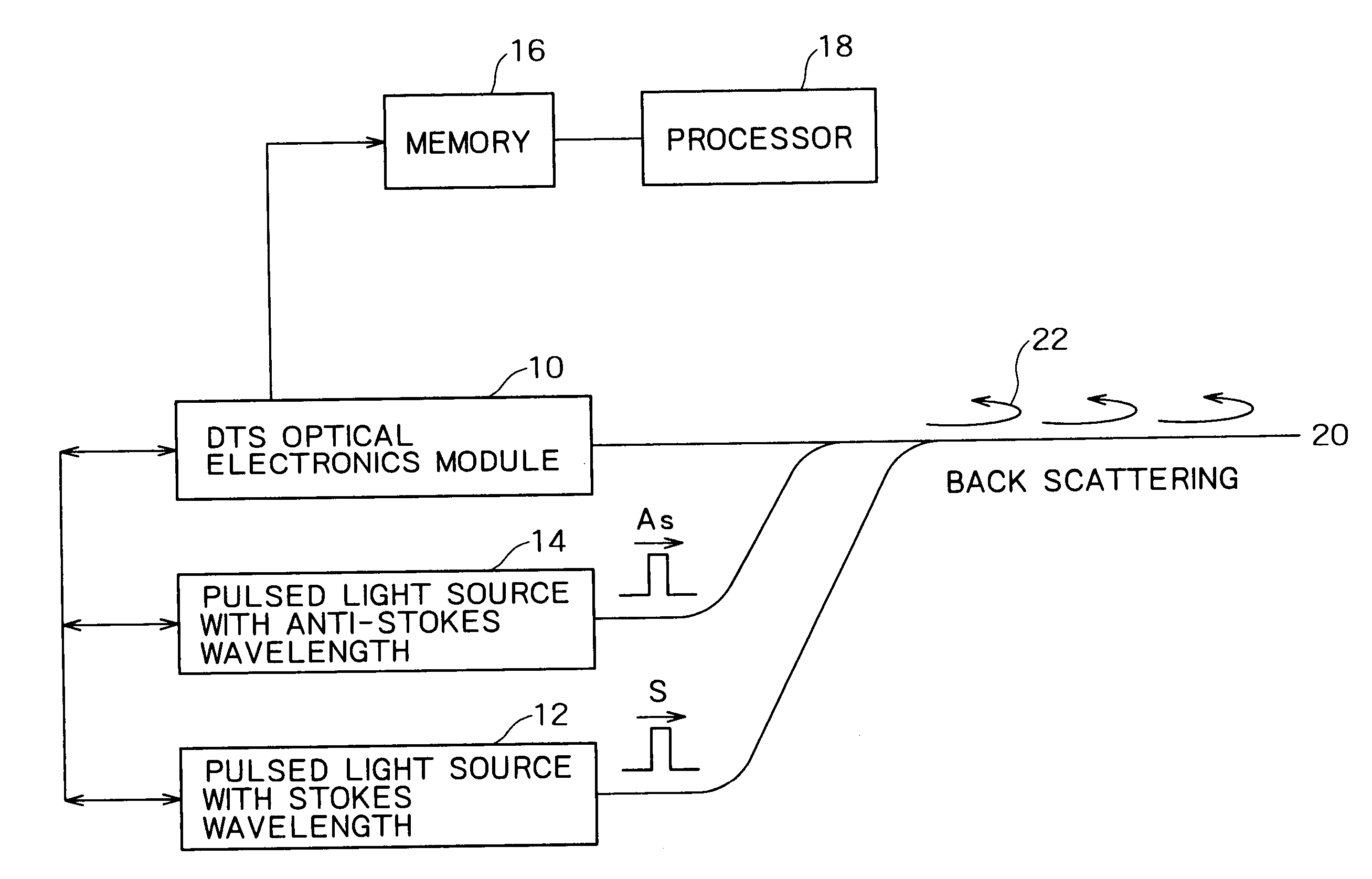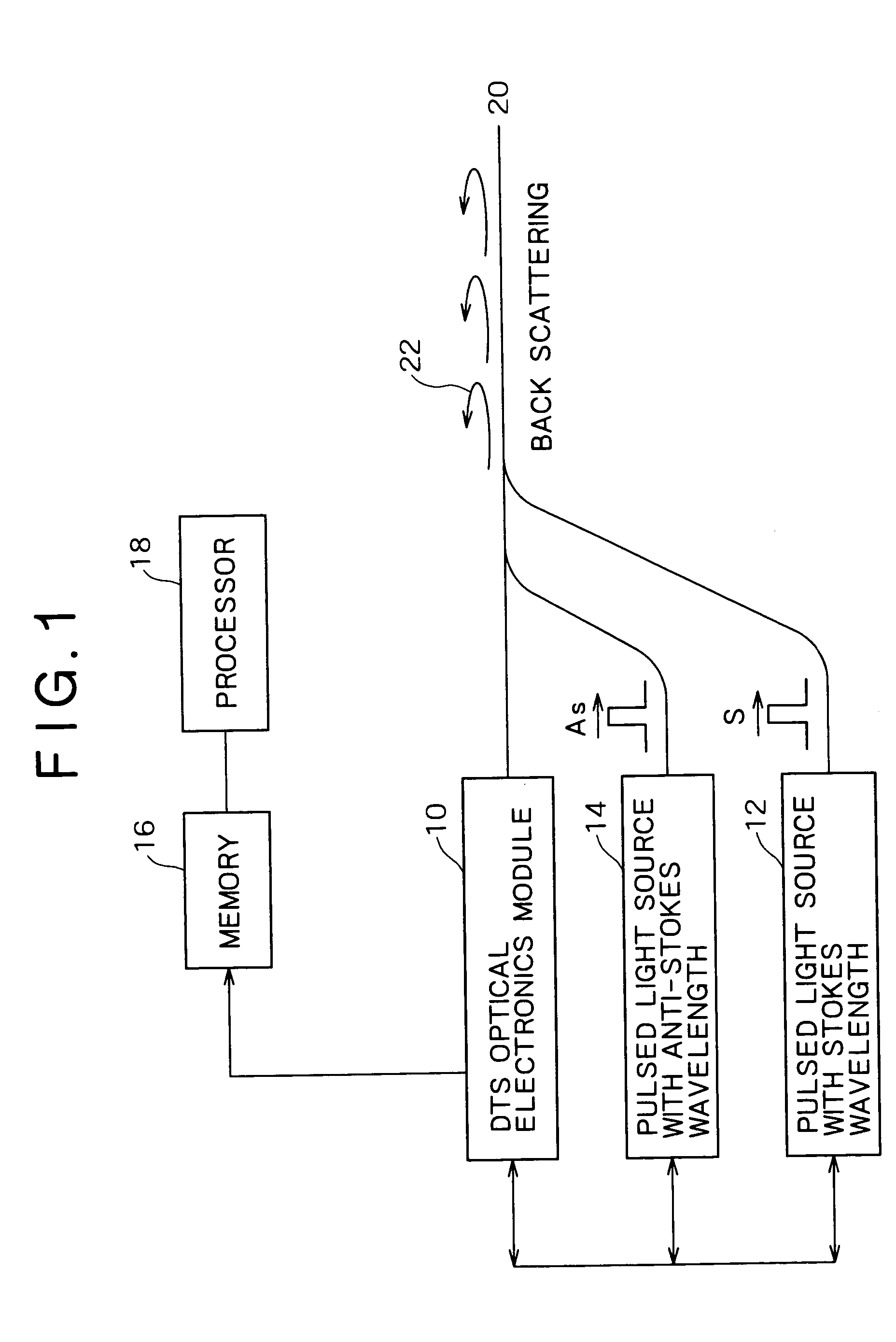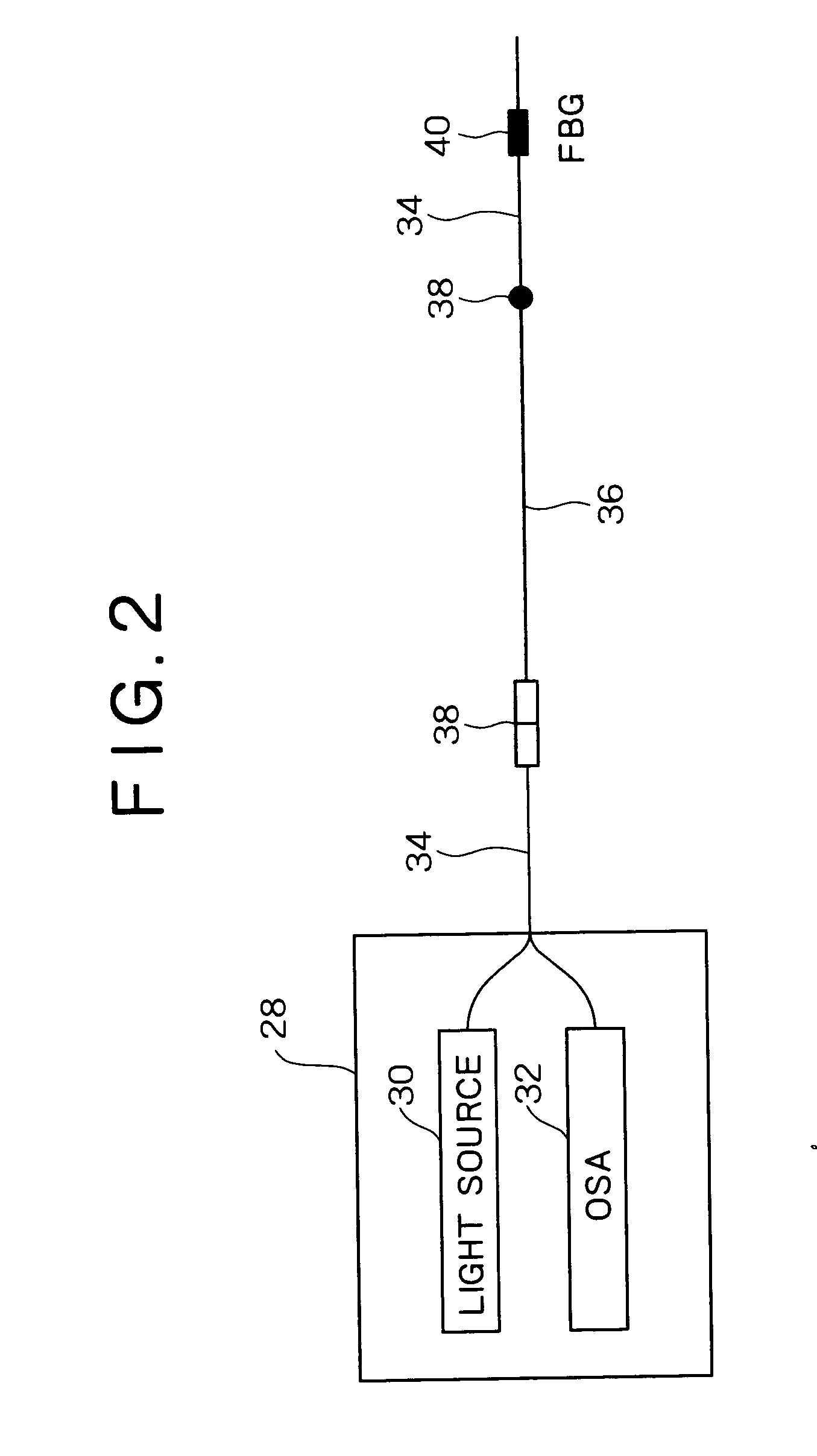Method for measuring and calibrating measurments using optical fiber distributed sensor
a technology of optical fiber and distributed sensors, applied in the field of fiber optic distributed sensors, can solve the problems of energy loss, change in attenuation, occurrence and effect of other deleterious influences, and difficulty in assessing the introduction of measurement errors
- Summary
- Abstract
- Description
- Claims
- Application Information
AI Technical Summary
Benefits of technology
Problems solved by technology
Method used
Image
Examples
Embodiment Construction
[0034] A concern in using FO distributed sensors is the possible loss of calibration of the FO distributed sensor after deployment due to the change in the fiber characteristics, such as non-uniform attenuation of the fiber along the spectrum caused by micro-bending losses or hydrogen ingression. This concern is particularly heightened when considering long-term deployment of a FO distributed sensor in a borehole environment as changes in the FO cannot be easily monitored, hostile conditions such as high temperature and pressures occur in borehole environments, and the expense of replacing a FO can be significant. This concern can be minimized by methods of calibration to correct measurements made using an in situ FO distributed sensor. Such methods of calibration include calculating an expected change in SAR with time, providing at least one calibrating sensor or FBG along the FO distributed sensor, providing measurements from each end of a loop configuration FO distributed sensor,...
PUM
| Property | Measurement | Unit |
|---|---|---|
| temperature | aaaaa | aaaaa |
| length | aaaaa | aaaaa |
| length | aaaaa | aaaaa |
Abstract
Description
Claims
Application Information
 Login to View More
Login to View More - R&D
- Intellectual Property
- Life Sciences
- Materials
- Tech Scout
- Unparalleled Data Quality
- Higher Quality Content
- 60% Fewer Hallucinations
Browse by: Latest US Patents, China's latest patents, Technical Efficacy Thesaurus, Application Domain, Technology Topic, Popular Technical Reports.
© 2025 PatSnap. All rights reserved.Legal|Privacy policy|Modern Slavery Act Transparency Statement|Sitemap|About US| Contact US: help@patsnap.com



